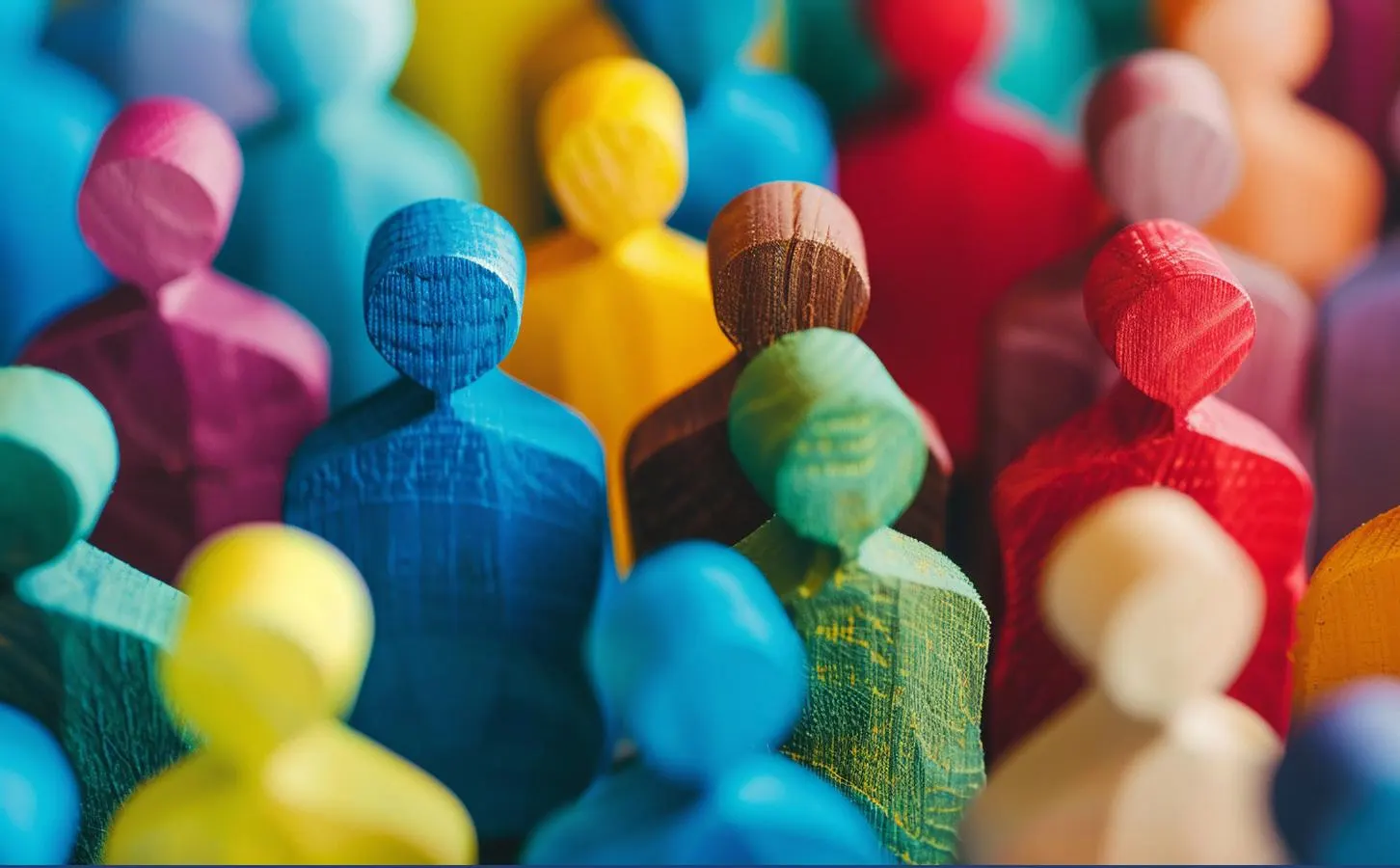By Contributor,Ginny Whitelaw
Copyright forbes

We turn down the temperature on violence and lift people to their best when we “become the other, go from there.”
Mungkhoodstudios on Canva
The temperature just keeps going up. From the assassination of Charlie Kirk to the annihilation of Gaza, every horrific headline is followed by a divisive aftermath of finger pointing around who said what about it, or didn’t say enough, or should be silenced, sued or fired. And yet it is exactly this being at one another’s throats that reinforces the milieu for violence. It is exactly the success of these “divide and conquer” tactics that make powerful autocrats even more powerful. While those in the business of grabbing attention may rejoice at the ratings, clicks and followers that outrage elicits, if we pause to listen deeply, we hear the cries of sickness. This is not the best within us.
If we want to turn down the temperature on violence and let our better angels spread their wings, it calls for something besides picking a side. Much as our personal perspective may favor one side or the other, true healing is only possible when we quit “othering,” or as Zen teacher, Tanouye Roshi put it, when we “become the other, go from there.” And here’s the kicker: becoming the other is a learnable, embodied skill. It is not some magical act of saints but something ordinary people can choose to get better at. It is a core practice of Zen Leadership and the leaders who practice it can heal the divides in their teams, families, organizations and communities. They can be the non-violent presence that heals our torn social fabric.
What is this “becoming the other” and what does Zen have to do with it? At its root, Zen is a physical practice that allows us to see through the illusion of separation. Yes, we have an ego—it’s a natural part of our development—but our mistake is thinking that’s the totality of who we are. Living in our heads, cut off from feeling in our heart and the ground of being in our hara (lower abdomen), we miss our interbeing with all of life, all of existence. Our attention is drawn to what moves and we miss our unmoving nature. We move toward the people and things we like, away from those we don’t like, hardening our likes and dislikes and sharpening the edges of the “I” that has them.
Zen training literally sits us down to face all of it just as it is, relaxing the body, quieting the mind and loosening the grip of “I”. Zen practices equip us with a body that can pull off this feat by using breath that centers in and cultivates hara and a posture aligned in gravity. Connecting with our own ground of being in hara opens us to a flow state called samadhi where the sense of a separate self dissolves and we experience ourselves as the whole picture. From these moments of samadhi, the truth of our paradoxical nature reveals itself: we are a local self with an ego and lifespan as well as an unborn, undying, selfless Self that permeates everywhere. Conversely, we are the entire universe experienced through this portal of senses. It is from such bigness that we can say with Walt Whitman, “I contain multitudes.” From such bigness, we can say:
I am Charlie Kirk and found my voice and power in right wing rhetoric.
I am Charlie Kirk’s family grieving the gaping hole his murder has left in our lives.
I am the parent of Charlie Kirk’s murderer, reeling from what he did and what I had to do.
I am a child in Gaza who has awakened amidst rubble with no person alive who cares for me.
I am an Israeli soldier invading Gaza, facing a child whose eyes pierce my soul.
I am a President who hungers for power and knows how to leverage tragedies like Charlie Kirk and Gaza to attack those on the left who could threaten my power.
I am one who loves truth, law, democracy and our country and am thus regarded as on the left.
As you read these sentences—and I encourage you to read them aloud—feel in your body what shifts as you step into each of these perspectives. Are some easier to enter than others? Are some so repulsive you want to rush past them? All good things to notice, all crucial data about the “I” that makes us think we’re smaller than we are. Perhaps you can feel moving through the set of them a softening, a heartbreaking, a more embracing understanding of what we share as humans.
MORE FOR YOU
Becoming the other can start as an act of imagination and gains texture the more we bring it into our body. Standing as the person, feeling as the person, sensing the causes and conditions that shaped them and inform their actions now—all of this moves us beyond opinions and stories and into holding the space where healing happens.
If we can enter the extremes of examples like the above, it’s much easier to become other closer to home. We can become the teenager we’re worried about, the team member who always dissents, the department in our company that never delivers on time, or the homeowner association president who protests our project. It’s not that our becoming these characters suddenly makes them agreeable to us or us to them. It’s that we get an insider’s feel for how to work with them. We see clearly who they are and how they are. When we quit resisting how a person is, even under the surface, they can quit resisting our resistance. And we just might, in holding an all-embracing acceptance of them, enable them to relax and open a bit more into who they can be.
I witnessed this opening up and flowering of people again and again in my years of executive coaching. My coaching was often done in the context of leadership programs where participants received 360-degree feedback on their strengths and weaknesses from those who worked above, below and around them. Sometimes, those who had received harsh feedback would come into our coaching session with armor on. They were afraid of being judged, told what to do, and just wanted to get through the session. Becoming them, I could feel all of this. Yet I could also sense, beyond the defensiveness, they had a boundless, selfless Whole Self nature no less than me. Without ever putting this into words, without judgment or advice, simply listening and trusting their bigness, I watched leader after leader go from folded-arm defensiveness to acceptance, vulnerability and sincere commitments to change.
If this is a practice you’d like to try out in your own leadership, start by thinking of someone with whom you’ve been in conflict or from whom you sense resistance where you want cooperation.
Center yourself with a deep, slow exhale dropping through your hara into the earth, eyes softly focused into your peripheral vision.
Write the name of the person you want to consider; it’s best to build this muscle of becoming the other by focusing on a single person, not a group.
Shift your body into a posture you’ve seen them take. Feel what this shift in you tells you about their emotional state, e.g., whether they’re armored or deflated, stable or unstable, etc. Feel where they’re holding tension, where they’re stuck. The better you sense your own body, the more you can sense signals within it that register the other in you. To sense your body on the inside calls for attending to interoceptive signals that are more subtle than the noisy sensory signals we take in from the environment. So, this sensing takes an intentional shift in focus akin to tuning into a different frequency on a radio to pick up a different kind of music.
To get a fuller sense of the person you’re becoming, try standing like them, walking like them, making the kind of gestures they make. Are they fast-paced or slow? Are they agitated or calm? You might also notice some resistance arising in yourself to the whole idea of becoming this person because something about them bothers you. This bother or resistance in you is also present in the relationship, likely eliciting some defensiveness from them. If this person senses, even unconsciously, that they need to protect themselves from you, they will.
Still being the other person, imagine experiencing what happens in them when ordinary, local you arrives with your idea or argument—how do they regard you? What’s their first reaction? If you wanted to get a different response, how would local-you need to show up differently? Imagine their bigness, beyond their conditioned responses to you. How big can you be to silently hold that sense of possibility with them?
Integrating all this felt sense from becoming the other, how might you go from there in a way accepts where they are, lets go of trying to change them and lets come whatever is ready to open up or heal in the relationship now.
This is a physical practice that we get better at the more we do it. It takes work but the payoff is enormous, as it frees us from being stuck in our opinions and judgments of others to being informed by the wisdom of deep empathy. Where we have direct real-world relationships with those we become, we bring love and healing to those relationships. Where we don’t have such direct relationships, as in the examples we opened with—being Charlie Kirk or a child in Gaza—our heart expands to “contain multitudes” rather than shrinks to objectify. This helps us see the bright and shadowy sides of ourselves, how all behaviors arise from causes and become future causes, and how our own behaviors can play into suffering and violence or love and healing.
Becoming the other also helps us be more realistic about what we can expect from the other. It’s unrealistic, for example, to expect a leader whose entire power comes from sowing conflict to abandon that strategy. So, knowing they will continue to sow conflict, how do we best go from there? We’ll each enact our own answer, but if we’re committed to turning down the temperature on violence and bringing out the best in people, including ourselves, we’ll become the other and manifest the healing power of love.
Editorial StandardsReprints & Permissions



